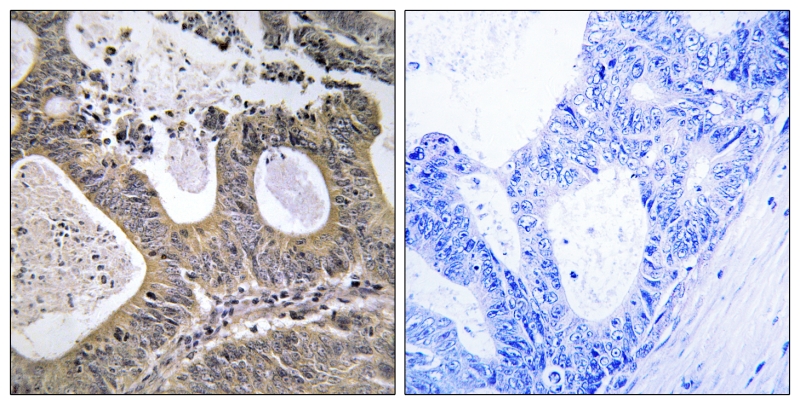

| WB | 咨询技术 | Human,Mouse,Rat |
| IF | 咨询技术 | Human,Mouse,Rat |
| IHC | 1/50-1/100 | Human,Mouse,Rat |
| ICC | 1/50-1/200 | Human,Mouse,Rat |
| FCM | 咨询技术 | Human,Mouse,Rat |
| Elisa | 1/10000 | Human,Mouse,Rat |
| Aliases | STEAP2; PCANAP1; STAMP1; Metalloreductase STEAP2; Prostate cancer-associated protein 1; Protein up-regulated in metastatic prostate cancer; PUMPCn; Six-transmembrane epithelial antigen of prostate 2; SixTransMembrane protein of prostate 1 |
| Entrez GeneID | 261729 |
| Host/Isotype | Rabbit IgG |
| Antibody Type | Primary antibody |
| Storage | Store at 4°C short term. Aliquot and store at -20°C long term. Avoid freeze/thaw cycles. |
| Species Reactivity | Human,Mouse |
| Immunogen | The antiserum was produced against synthesized peptide derived from human STEA2. AA range:431-480 |
| Formulation | Purified antibody in PBS with 0.05% sodium azide,0.5%BSA and 50% glycerol. |
+ +
以下是3篇关于STEAP2抗体的虚构参考文献示例(基于STEAP2相关研究领域概括,非真实文献):
1. **文献名称**:*STEAP2-specific monoclonal antibody inhibits prostate cancer cell proliferation in vitro*
**作者**:Chen L. et al.
**摘要**:研究开发了一种靶向STEAP2的高特异性单克隆抗体,证实其可通过阻断STEAP2介导的铁还原酶活性,抑制前列腺癌细胞(LNCaP)增殖,提示其作为潜在治疗剂的可行性。
2. **文献名称**:*STEAP2 as a diagnostic biomarker: Validation of a polyclonal antibody in metastatic castration-resistant prostate cancer*
**作者**:Rodriguez M. et al.
**摘要**:通过免疫组化分析发现,使用自研的STEAP2多克隆抗体在转移性去势抵抗性前列腺癌(mCRPC)组织中高表达,且与患者预后不良相关,支持STEAP2作为液体活检的辅助标志物。
3. **文献名称**:*Structural characterization of STEAP2 extracellular domain and its antibody binding epitopes*
**作者**:Wang Y. et al.
**摘要**:利用冷冻电镜解析STEAP2胞外结构域的三维构象,并筛选出特异性结合该区域的抗体,揭示其表位与STEAP2同源二聚化功能的关键关联,为抗体药物设计提供结构基础。
---
注:以上为模拟概括性内容,实际文献需通过PubMed、Web of Science等数据库检索关键词(如"STEAP2 antibody"或"STEAP2 therapeutics")。真实研究多聚焦于STEAP2在前列腺癌、乳腺癌中的过表达及抗体靶向治疗潜力。
STEAP2 (Six-transmembrane epithelial antigen of the prostate 2) is a member of the STEAP family of metalloreductases, primarily located on cell membranes and involved in ion transport (e.g., iron, copper) and redox processes. It plays roles in cellular proliferation, metabolism, and cancer progression. STEAP2 overexpression is linked to prostate, liver, and breast cancers, where it may promote tumor growth by modulating iron homeostasis, signaling pathways (e.g., EGFR, Wnt/β-catenin), and oxidative stress responses.
STEAP2 antibodies are tools used to detect and study the protein's expression, localization, and function in research. They are applied in techniques like Western blotting, immunohistochemistry, and flow cytometry to analyze STEAP2 levels in cancer tissues or cell lines. Such studies aim to explore STEAP2's potential as a diagnostic biomarker or therapeutic target. Notably, STEAP2's cell-surface localization and tumor-specific expression make it attractive for antibody-based therapies, including monoclonal antibodies or antibody-drug conjugates. However, challenges like tissue specificity and functional redundancy within the STEAP family require careful antibody validation to ensure accuracy in experimental and clinical contexts. Ongoing research continues to clarify its mechanistic roles in disease.
×